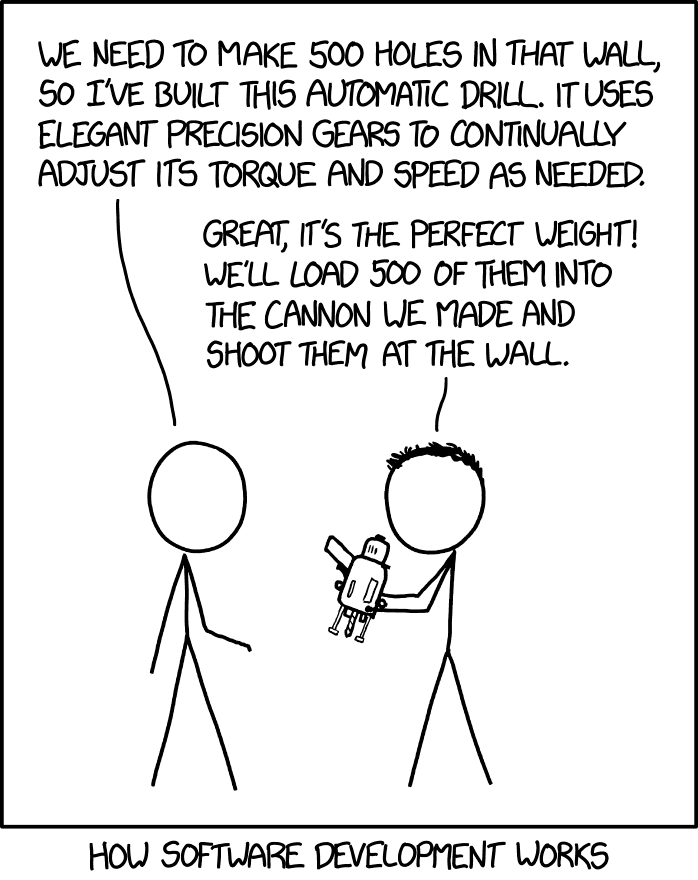Dump linków #6

W ostatnim tygodniu: Lidl przyznał się do porażki we wdrażaniu SAP, czym jest SLI, SLA i SLO, trochę na temat jak zbudowane i zoptymalizowane jest haveibeenpwned. Z dowcipów tygodnia, warto poczytać o modelu do predykcji na mistrzostwa świata przygotowanym przez Goldman Sachs.

W Azure dwa ciekawe ogłoszenia z mojej perspektywy. Pierwszym i biznesowym jest umowa pomiędzy Microsoft i Walmart.
Microsoft and Walmart are teaming up for a strategic partnership that will take on rival Amazon in both technology and retail. Walmart is announcing today, at Microsoft’s Inspire partner conference, that it’s partnering with Microsoft to use the company’s cloud services. The five-year agreement will see Walmart use Azure and Microsoft 365 across the company, alongside new projects focused on machine learning, artificial intelligence, and data platforms.
Drugim jest Azure Service Fabric Mesh. W uproszczeniu, jest to nowy model aplikacyjny implementujący podejście Service Mesh na Azure Service Fabric i jest ono proste jak na Kubernetes, ale docelowo zapewniające o wiele większe możliwości i stabilność. Można powiedzieć, że jest to przyszłość, o której wspomina Brendan Burns w QA na temat przyszłości Kubernetes.
Brendan Burns: I’m kind of hoping that people stop thinking about Kubernetes so much. I kind of feel like Kubernetes is the assembly language for Cloud Native applications. I hope, in five years, we think of Kubernetes kind of like we think of the x86 or ARM assembly language. Sure, it’s there running underneath our programs, but on a day-to-day basis we consume higher level abstractions that make us more productive as developers and operators of applications. With Kubernetes we’ve laid the foundation of a truly cloud-native runtime, but we’ve got a lot of work ahead of us to build the right programming models that make it easy for everyone to consume.
Zapraszam do przeglądania!
Linki z mojego Pocketa
- Ciekawy opis jak przeciwdziałać hijacking BGP prefix i reagować na niego w ciągu minut
- Draft opisujący jak budować protokoły z wykorzystaniem HTTP -Jedne z nowych pomysłów na budowę przepływów Continuous Delivery. Tutaj z wykorzystaniem GoCD
- O tym jak Goldman Sachs skopał swój model do predykcji na mistrzostwa świata w piłkę nożną. Niby bank inwestycyjny, a nie udało się ;-)
- Jedne z przykładów jak można migrować aplikacje do IaaS i jakie są zasady takiego procesu
- Into the Borg – SSRF (atak Server Side Request Forgery) inside Google production network, tutuł mówi sam za siebie ;-)
- Trwałość danych w Backblaze to 99.999999999%. Warto też zobaczyć ich raporty na temat jak padają dyski
Backblaze Durability is 99.999999999% — And Why It Doesn’t Matter
- Podstawy używania Helm do wdrożeń na Kubernetes
- LIDL kasuje wdrożenie SAP… Po wydaniu około 500 000 000 EUR. Tak, liczba zer się zgadza…
Most companies think they are unique, and special, and feel justified in needed to customize, all those companies are wrong.
- Różnica pomiędzy systemami Mission-Critical, a Business-Critical, często przez nas zapominana przy określaniu różnych założeń i projektowaniu.
- Kolejny post Troya Hunta na temat tego co stoi za jego serwisem haveibeenpwned. Tym razem o Seamless A/B Testing, Deployment Slots i DNS Rollover z wykorzystaniem Azure Functions i Cloudflare Workers
- Podstawy przy utrzymywaniu usług i projektowaniu, czyli czym jest SLI, SLA i SLO
- Naciekawsze rzeczy z Stuff The Internet Says On Scalability For July 20th, 2018:
Szczera prawda o tym, jak Javowcy widzą świat
This is the prism through which Java programmers view the world. They never question this belief. It also works well to justify an acquisition of more servers to investors. Investing tons of efforts into IT, building complicated deployment and clustering software etc. This is what happens in the company I work for, and couple of mid-size to big companies I worked for before.
mozumder: What kind of numbers are they talking about for it to be “large-scale”? One well designed fast app server can serve 1000 requests per second per processor core, and you might have 50 processor cores in a 2U rack, for 50,000 requests per second. For database access, you now have fast NVMe disks that can push 2 million IOPS to serve those 50,000 accesses. 50,000 requests per second is good enough for a million concurrent users, maybe 10-50 million users per day. If you have 50 million users per day, then you’re already among the largest websites in the world. Do you really need this sort of architecture for your startup system?
Ciekawe Azurowe linki z ostatniego tygodnia
- Announcing the Azure Cloud Shell editor in collaboration with Visual Studio Code
- Azure Cloud Shell editor | Azure Friday
- Azure Monitor: Route AAD Activity Logs using diagnostic settings
- Azure Service Fabric Mesh is now in public preview
- Azure Service Fabric Mesh preview | Azure Friday
- Azure Tips and Tricks Part 142 - Quickly edit files within Cloud Shell using Code
- Blockchain as a tool for anti-fraud
- Foretell and prevent downtime with predictive maintenance
- General availability: Configurable long-term backup retention for Azure SQL Database
- General availability: vCore-based purchasing model for SQL databases and elastic pools
- Globally replicated data lakes with LiveData using WANdisco on Azure
- How to schedule trigger for Azure Data Factory (ADF) Pipeline?
- In preview - Azure Service Fabric introduces its fully managed option, Service Fabric Mesh
- Now available - Azure SQL Database supports auto-failover
- Now available - Long-term backup retention feature of Azure SQL Database now generally available
- Preview of Azure Blob Storage Lifecycle Management
- TWC9: Azure Cloud Shell Gets VSCode-like, Imagine Cup Finals are coming, cheap email with Azure DNS, Windows 98 PC builds and more | This Week On Channel 9
- Workspace selection added to Analytics, in each of your query editor tabs
10 najpopularniejszych Azurowych linków na Twitterze z ostatniego tygodnia (2018-07-16 - 2018-07-22)
- Azure Service Fabric Mesh is now in public preview
- Announcing the Azure Cloud Shell editor in collaboration with Visual Studio Code

- Score one for the IT Pro: Azure File Sync is now generally available!
- Azure Security Center is now integrated into the subscription experience
- Blockchain as a tool for anti-fraud
- Microsoft and Walmart team up to take on Amazon
- Azure cost forecast API and other updates
- Getting started with IoT: how to connect, secure, and manage your “things”
- Azure AD Managed Service Identity updates
- Intelligent Healthcare with Azure Bring Your Own Key (BYOK) technology
